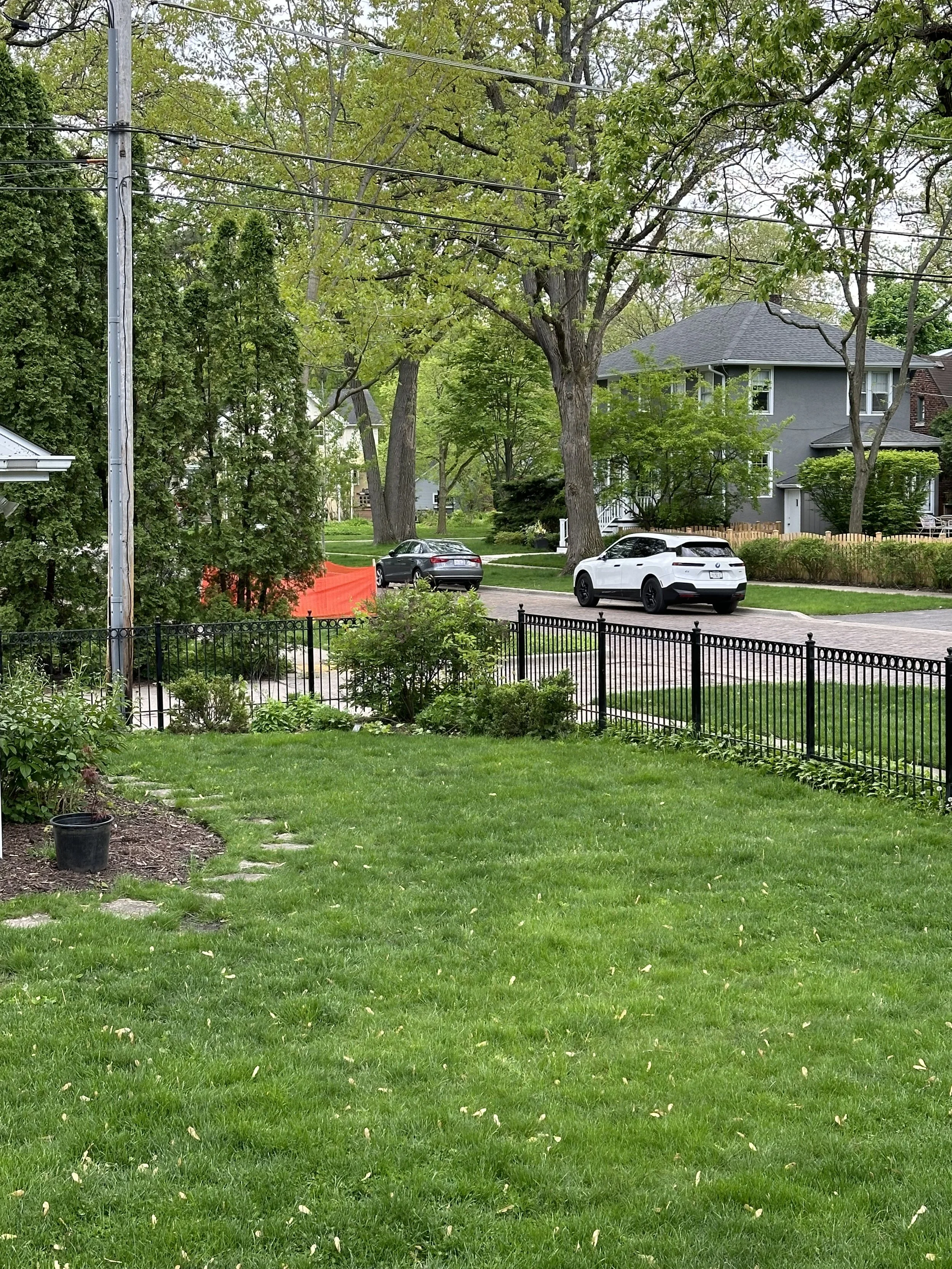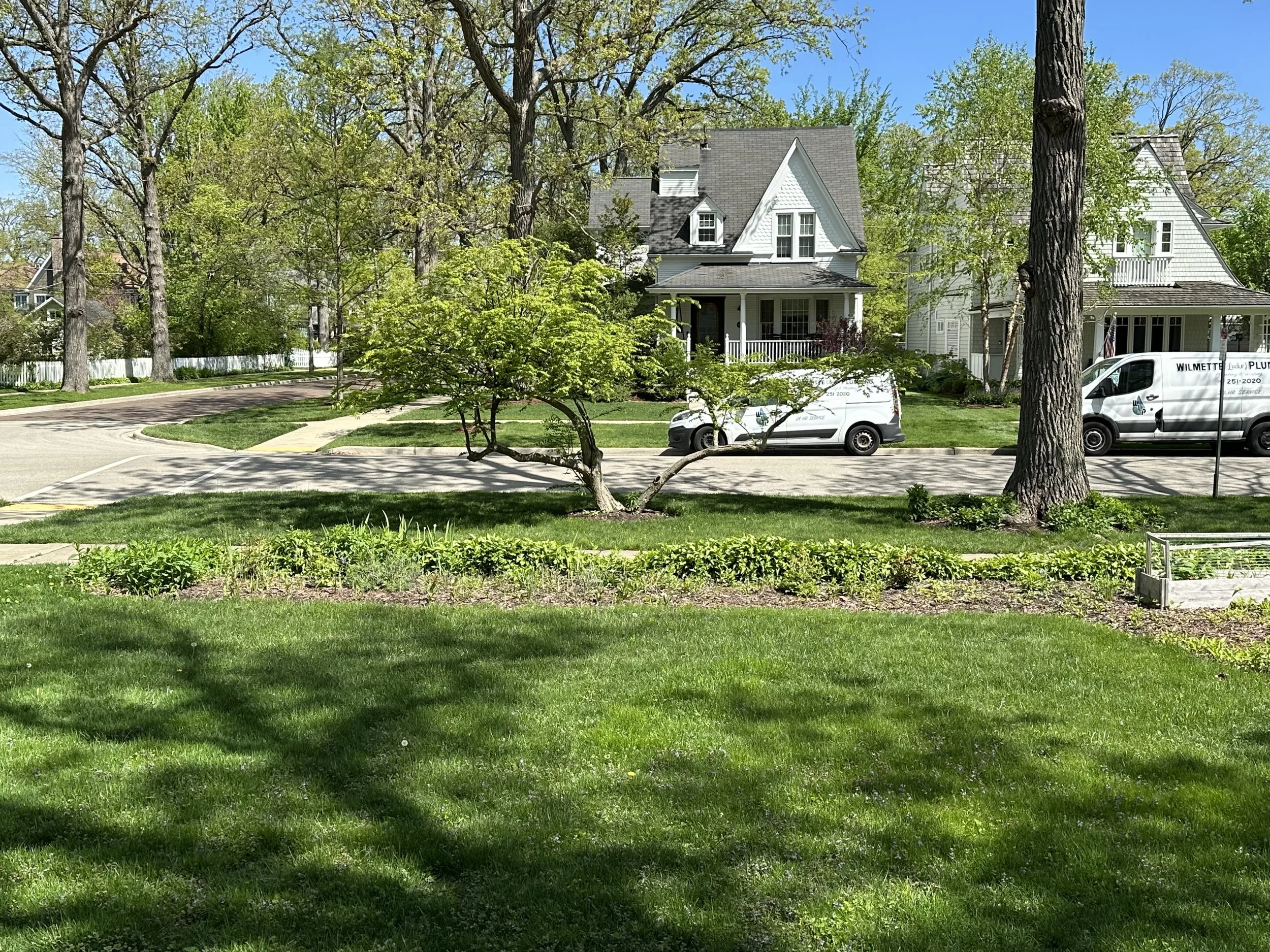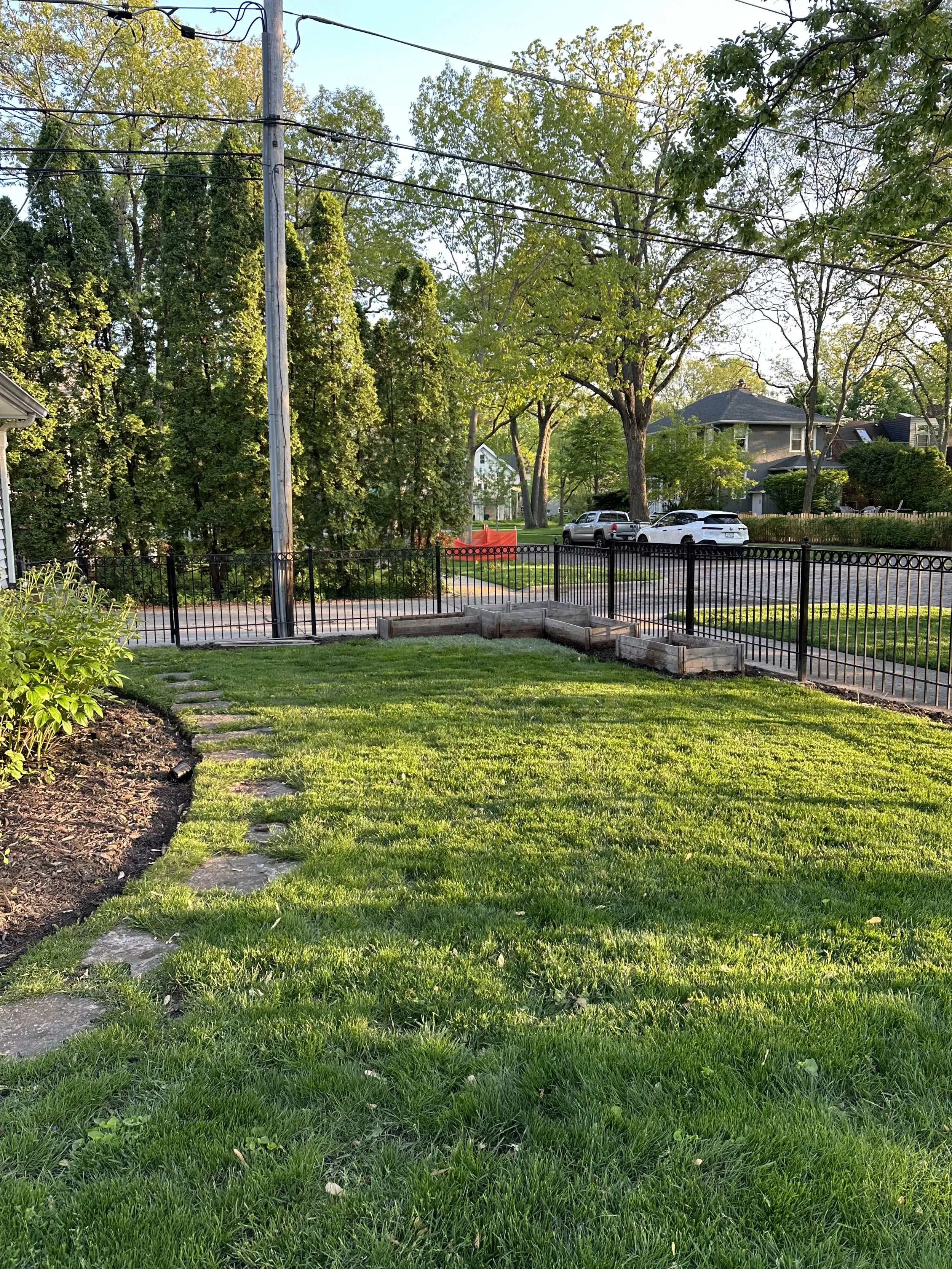Best Time to Fertilize Your Lawn & Tips for Greener Grass
Fertilizing your lawn is essential for keeping healthy, green grass throughout the growing season. If you're like me, you might be wondering - when is the best time to fertilize your lawn?
The best time to apply lawn fertilizer depends on your grass type, local climate, and the specific needs of your lawn. In this post, we'll cover an ideal fertilization schedule and give tips & tricks to ensure your lawn stays lush and green for as long as possible!
Why Should You Fertilize Your Lawn?
Fertilizing your lawn is vital for providing the essential nutrients that grass needs to grow strong and healthy. Without the right nutrients, your lawn can become weak and susceptible to pests and diseases.
Regular fertilization promotes strong roots, vibrant blades of grass, and helps your lawn withstand the heat of summer. A well-fed lawn can also recover more quickly from foot traffic and other stresses, ensuring it looks fabulous year-round.
When is the Best Time to Fertilize Your Lawn?
Understanding Grass Types and Their Needs
First, let's break down the different grass types and their unique fertilization needs to achieve that beautiful green lawn. There are two main categories: cool-season grasses and warm-season grasses.
Cool-Season Grasses:
Cool season grasses are a type of grass that thrive during cooler temperatures, making early spring and early fall the best time for their fertilization.
Examples: Kentucky bluegrass, perennial ryegrass, fine fescue, and tall fescue.
Best Time: Early spring and early fall are ideal for fertilization.
Characteristics: These grasses thrive in lower temperatures and have their peak growing season in spring and fall.
Warm-Season Grasses:
Warm season grasses flourish in warm temperatures, with late spring and early summer being the best time to fertilize them for optimal growth and a healthy lawn.
Examples: St. Augustine, Bermuda, zoysia, and centipede grass.
Best Time: Late spring and early summer are optimal times to fertilize.
Characteristics: These grasses prefer warm temperatures and grow most vigorously in the summer.
Before you fertilize, make sure you know if you have a warm-season lawn or a cool-season lawn.
Best Time to Fertilize by Grass Type & Season
Knowing the most effective time to fertilize your lawn depends on your grass type and the season. For cool-season grasses, early spring and early fall are ideal, while warm-season grasses benefit most from fertilization in late spring and early summer.
Early Spring:
Cool-Season Grasses: Fertilize to help the lawn recover from winter dormancy and promote healthy growth.
Warm-Season Grasses: Not the best time to fertilize; wait until late spring.
Late Spring to Early Summer:
Cool-Season Grasses: Apply a lighter dose to maintain health.
Warm-Season Grasses: This is the perfect time for fertilization, as these grasses are entering their peak growing season.
Early Fall:
Cool-Season Grasses: Fertilize to help strengthen roots before winter.
Warm-Season Grasses: Avoid fertilizing; focus on preparing the lawn for dormancy.
Late Fall:
Cool-Season Grasses: Apply a winterizer fertilizer to prepare for cold weather.
Warm-Season Grasses: Generally not a good time to fertilize.
How Do You Fertilize Your Lawn?
Fertilizing your lawn is pretty straightforward, but there are a few steps to make sure you get it right.
First, figure out the right time to fertilize based on your grass type and local climate. Using a spread fertilizer helps you cover the entire area evenly. Make sure to measure it in square feet so you know exactly how much you need.
After spreading, give your lawn a good watering to help the nutrients soak into the soil surface. For the best results, follow the instructions on the bag of fertilizer and consider soil testing to pinpoint your lawn's specific needs.
Choosing the Right Fertilizer for Your Lawn
Choosing the right fertilizer for your lawn depends on several factors, including the type of grass, the time of year, and your lawn's specific needs. You can go with either organic or synthetic fertilizers, each with its benefits and things to consider.
Organic Fertilizers:
Benefits: Made from natural sources like compost and manure, organic fertilizers improve soil structure and boost organic matter levels. They release nutrients slowly, promoting strong roots and long-term soil health.
Considerations: They can be more expensive and slower to show results compared to synthetic options.
Synthetic Fertilizers:
Benefits: Manufactured chemicals that provide a quick nutrient boost to your lawn, resulting in faster visible growth. They are often designed for specific needs, like slow-release nitrogen for sustained feeding.
Considerations: Overuse can lead to toxic chemicals building up in the soil and potentially harm the environment if not applied correctly.
Look for fertilizers that provide a balanced mix of nutrients, often indicated by the third number on the package, which represents the amount of potassium.
For cool-season grasses, winterizer fertilizers are ideal for late fall, while warm-season grasses benefit from a slow-release nitrogen fertilizer in late spring.
Always follow fertilizer recommendations to avoid applying too much or too little, ensuring your lawn gets just the right amount of nutrients for healthy growth.
Lawn Fertilization Tips & Tricks
To achieve a healthy lawn with lush, green grass, follow these fertilizing tips and tricks:
Soil Testing: Conduct a soil test to determine the specific nutrient needs of your lawn. This helps you choose the right fertilizer.
Type of Fertilizer: Use a fertilizer with the right balance of nitrogen, phosphorus, and potassium. For example, a slow-release nitrogen fertilizer is ideal for promoting steady growth.
Application: Use a spreader for uniform distribution of the fertilizer. Water the lawn after applying to help nutrients penetrate the soil.
Timing and Weather: Apply fertilizer before light rain to help with absorption, but avoid heavy rainfall which can wash away nutrients.
Things to Consider
New Lawns: Use a starter fertilizer when establishing a new lawn to encourage root development and healthy growth.
Foot Traffic: High foot traffic areas may need more frequent fertilizer applications to maintain grass health.
Lawn Care Products: Choose products suited to your grass type and local climate. Synthetic fertilizers can provide quick results, but natural organic fertilizers are better for long-term soil health.
Common Mistakes to Avoid
Wrong Time: Avoid fertilizing at the wrong time of year, which can stress the lawn or promote disease.
Over-fertilizing: Using too much fertilizer can burn the grass and damage the root system. Follow the recommended amount on the fertilizer bag.
Ignoring Soil Health: Fertilization should be part of a broader lawn care routine that includes proper mowing, watering, and aeration.
More Tips for a Greener Lawn
Grass Clippings: Leave grass clippings on the lawn to decompose and return nutrients to the soil.
Aeration: Aerate your lawn to improve soil structure and allow nutrients to reach the grass roots.
Watering: Water deeply and infrequently to encourage deep root growth. Avoid frequent shallow watering which can lead to weaker roots.
Seasonal Care: Adjust your fertilization schedule based on the season and grass type. For example, apply a slow-release nitrogen fertilizer in early spring for cool-season grasses, and use a winterizer fertilizer in late fall to prepare for colder temperatures.
The best time to fertilize your lawn varies depending on the type of grass and your local climate. By understanding the needs of your lawn and following a proper fertilization schedule, you can achieve a lush, green lawn throughout the year.
FAQs About Lawn Fertilization
When should you not fertilize your lawn?
Avoid fertilizing your lawn during the heat of summer, as the high temperatures can stress the grass and make it more vulnerable to damage. It's also not a good idea to fertilize during periods of heavy rainfall, as the nutrients can wash away before they have a chance to be absorbed.
Is it better to fertilize before or after rain?
It's best to fertilize before a light rain, as it helps the nutrients penetrate the soil surface without washing them away. However, avoid fertilizing before heavy rainfall, as it can lead to runoff and nutrient loss.
Is it better to fertilize before or after mowing?
It's generally better to fertilize after mowing. Mowing before fertilizing allows for better absorption of the nutrients by the grass. Just make sure you wait a day or two after mowing to apply the fertilizer.
What months should you fertilize?
The best months to fertilize depend on your grass type. For cool-season grasses, early spring and early fall are ideal. For warm-season grasses, late spring and early summer are the best times. Late fall is also a good time for applying winterizer fertilizers to prepare the lawn for winter. You shouldn't fertilize in late winter.
Can you apply fertilizer on wet grass?
Yes, you can apply fertilizer on wet grass, but it's usually better to apply it to dry grass and then water it in. This helps ensure even distribution and absorption without the risk of burning the grass.
Should you water your lawn after fertilizing?
Yes, watering your lawn after fertilizing helps the nutrients penetrate the soil and reach the grass roots. Just make sure to water lightly to avoid washing away the fertilizer.
How long after fertilizing can I walk on grass?
It's best to wait until the fertilizer has been watered in and the grass has dried before walking on it, usually a few hours to a day. This helps ensure that the nutrients are absorbed properly and prevents them from being tracked away by foot traffic.
Remember to use the right fertilizer, apply it at the correct times, and incorporate other lawn care practices for the best results. Happy gardening!
You might also like…
Hi, I’m Jen!
Hi, I’m Jen, your perpetually optimistic, fun-loving, witty friend. When I’m not working at The Marketing Greenhouse, you can find me gardening in the sun, playing games with my kids or creating content that inspires people to try new things and be the best version of themselves.

















